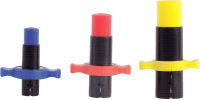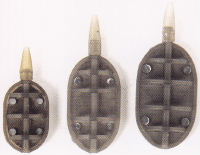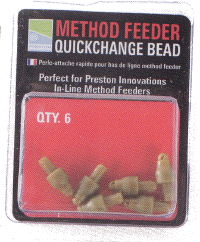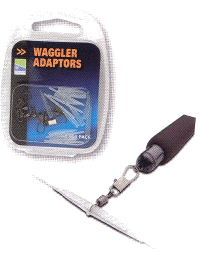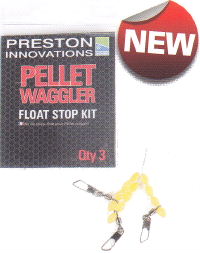Groundbaiting for Roach
We usually associate groundbait with bream, but the truth is that roach love the stuff too! Drennan-backed Paul "Yani" Yates was on hand at Willowgarth Fishery, near Doncaster, to elaborate..
Bread-based groundbaits have long been the staple of roach anglers - take liquidised bread as a case in point. They seem to work well for this shoal species but, because their appetites are nowhere near as monstrous as those of bream, it can be quite easy to overdo it.
Before you begin to attack a venue that contains plenty of roach, you have to understand how this species feeds. They're shoal fish, so where there's one, there'll be many others. On the whole, they're also not bottom feeders. The shape of their mouths makes them adept at chasing food at all levels, but it's in the middle layers that they seem to be most comfortable. The roach's often-mistaken-for cousin, the rudd, feeds very much in the same way (although its upturned mouth makes it slightly better suited to surface feeding), which is why when groundbaiting for roach you'll often bag a few rudd too.
With this in mind, you need to choose the right groundbait to use. An inert, static mix that lays on the bottom isn't going to suit the roach's feeding style, whereas an active mix with particles that 'hang' in the water column is always going to do the business better. Plain brown crumb still works, but I do believe that proprietary groundbaits from the major groundbait manufacturers will always bring superior results.
For much of my roach fishing I go for VDE Superoach and Super Match. Both have fine textures, strong aromas that seem to draw fish in quickly, and active particles that keep fish feeding actively. I'm not wholly convinced that certain aromas work better than others, as they probably don't smell 'natural' to a fish, but results speak for themselves and these two work better than any others I've tried.
In summer the roach will be ravenous and will basically eat anything and everything!
With fine mixes you need to mix them right, to suit the way you want to fish. As usual, I always mix up well before fishing to give the mix enough time to properly soak up all the water. As a rule, when these two groundbaits are mixed evenly (a bag apiece is enough for a bagging session) I should end up with a fluffy and dry(ish) mix when the water's added. A mix with this texture will break up better than one that feels stodgy; stodgy mixes tend to bind too much, hit the bottom and take too long to break down.
Of course, the amount of active particles is dictated firstly by how much you riddle the groundbait before mixing to remove large particles, and secondly by how long the mix has been left to soak in the water. Too little time and any denser, harder particles won't have soaked in the water and will just float.
The time of year you're fishing is a good barometer as to the amount of 'feed' particles you keep in the base mix. When it's cold then you can just about riddle anything that resembles feed out of the mix, simply relying on what you add - be it maggots, pinkies or casters - to do the job. In summer, however, you can keep all the particles in AND add your own feed, because the roach will be ravenous and will basically cat anything and everything! I'm quite happy with the feed content that these mixes contain, but if you're a fan of other brands then you may need to do a little groundwork before you wet the mix.
Lumps need to be removed once the mix is wetted, and a riddle is essential to get rid of these. Don't just chuck them up the bank, though, push them through the riddle and, if you need to, riddle the mix again to make sure it's nice and fluffy.
Accumulating a decent bag of silver fish means catching them at a fast pace. I'm feeding two lines - one at seven metres, the other at 11 metres. The 7m line will hopefully be the most productive, meaning I can fish faster (less pole to ship out and all that), although when it's clear water, as it is today. bankside disturbance can put paid to this.
With bream, it's usually best to introduce several balls of feed all at once at the start and leave it, so a passing
shoal will stop and graze. Roach prefer to find the groundbait, so a few balls at the start won't go amiss, but then they like smaller nuggets of mix coming into the swim regularly.
There is a simple maxim for roach which holds true whether you're using groundbait or loose feeding (or both), which is 'feed little and often'. When it's cold you can be cautious, feeding small nuggets at extended periods of 20 or even 30 minutes, but in summer it can be as regular as every two or three minutes. In warm weather it often pays to throw caution to the wind and really feed them up.
Today I've not removed any feed particles. In fact, I've just mixed it straight from the bag and have added some casters and dead maggots. Casters attract a better stamp of roach and the dead maggots will lie motionless on the deck, so any roach that do decide to feed low down will have something to look for.
The smaller roach will get stuck in first with the particles that are rising through the water column, and with maggots being a particular favourite of small roach that's what I see as the best starting hook bait.
I've had a slow start today, but once indications started, bites have come regularly. Aside from a nugget of groundbait about the size of a walnut every five minutes, I've been feeding six or seven casters at the same point through a catapult. 1 think that some extra bait falling from the surface encourages the fish to compete, and once the small fish have started up the bigger fish usually get in on the act. In fact, it's worked a treat: after two hours of gradually building up the swim, the size of fish has gradually increased.
As more fish have started to feed and more bites have come, it's just been a case of switching to the strung-out rig to catch fish higher in the water. This is set to full depth so it will fish the bottom once it's fully settled.
The main thing about a full-depth rig is that when you're laying it in, you have to do it so that it falls in an arc. At full stretch the hook bait is well away from the feed, and that's when you get smaller fish that have been bullied out of the main feed area. If you start to get small fish, change to a shallow rig to fish where the bulk of the feeding fish are and you should see an improvement in fish size.
Of course, with a photographer on the bank today, the close-in line hasn't fished that well. While he was on the far bank, a quick look on the 7m line brought fish straightaway. and for the 15 minutes I was alone I caught well. It just goes to show the value of keeping a low, quiet profile when fishing in clear water!
Groundbait is certainly a help and not a hindrance when it comes to fishing for roach. There are loads of dedicated roach mixes out there and most of them will do the job brilliantly. just think about how the basic make-up of the mix (its particle size) will work in the conditions: if it's cold the fish will generally want less feed, whereas in summer they'll cat anything! Providing you mix it right, and leave it to soak up the particles properly, then you'll create a fluffy mix that will break up through the water and hold fish at all levels. apf
Yani's Roach Rigs
Although roach are present in just about every type of water in the UK, I'm focusing on stillwater roach fishing today. The rigs reflect this, although they can be adapted for rivers and canal fishing. To my mind a stillwater roach rig must be designed to fish at all depths. I always make up two rigs - one for fishing the bottom third of water, the other for predominately fishing the top two thirds.
The logic is simple, the full-depth rig will pull a hook bait through the entire depth of the swim, but will be most effective when settled so the bait is near the bottom. If the fish are just off the deck then you can shallow up inch by inch, so when the rig is at full extension the hook bait is basically on their noses.
The shallower rig comes into play when the fish are well off the bottom, at mid-depth or higher. Roach will move up to intercept bait falling through the water, so a shallow rig can be important in maximising your swim's potential. I catch an awful lot of the large fish during sessions with a shallow rig, as they often bully the small roach out when they know there's food on offer!
Elastics should be light - a No4 (or No6 in summer) is fine for most roach - and lines should reflect the need for a mix of finesse and durability. I'm happy with 0.10mm throughout the year, just changing the hooklength to suit. In winter use 0.06 to 0.07mm, in summer you can use 0.08mm or even 0.10mm main line straight through. A size 18 hook will suit casters fine and a size 20 will be okay for maggots. I use a Kamasan B511 or Drennan Silverfish Maggot regardless.
Choosing the right float can be a headache. Carbon stems are my favourites and long nylon tips seem to work throughout the year. For deeper swims I would use a Drennan Tuff Eye or one of the larger Drennan Squatt patterns, or of course a Drennan Roach! The load capacity needs to be around 4x12 or 4x14 for six feet of water.
For the shallower rig, a light Drennan Roach or a stubby Drennan Carp 2 taking 4x10 is ideal.
The shallow rig is shotted with equally spread No.11's. The deeper rig can utilise two shotting patterns - shot can be spread equally down the length of the rig, or you can use a bulk at mid-depth with spread-out droppers below.
In colder conditions I favour the bulk pattern, because it takes the bait down quickly to where I'd expect the fish to be, at least initially. However, the spread-out rig can work even when the water is cold. The fish don't always want to sit low down in the water, and the key is to have the rigs ready to swap and change in order to try and find out at what level the fish are taking the bait.
Don't just sit there fishing in the same way - it's vital to make minor adjustments to the depth and the shotting until you get as close as possible to perfect presentation, and that only comes when you are catching a fish every cast! That is the ultimate goal.
Location: Arksey, near Doncaster Directions: From Junction 37 of the A1 take the A635 to Doncaster. Turn right onto the A638, and when you see signs for the A1 9 turn right at the mini-roundabout into Arksey Lane, and then bear left onto Station Road. Turn left by the church and then right into Shaftholme Road, where you'll see the fishery entrance on the left Contact: Fishery owner Stuart Ward on 01302 563728 Day tickets: £4
This article is reproduced with the kind permission of David Hall Publishing Limited


